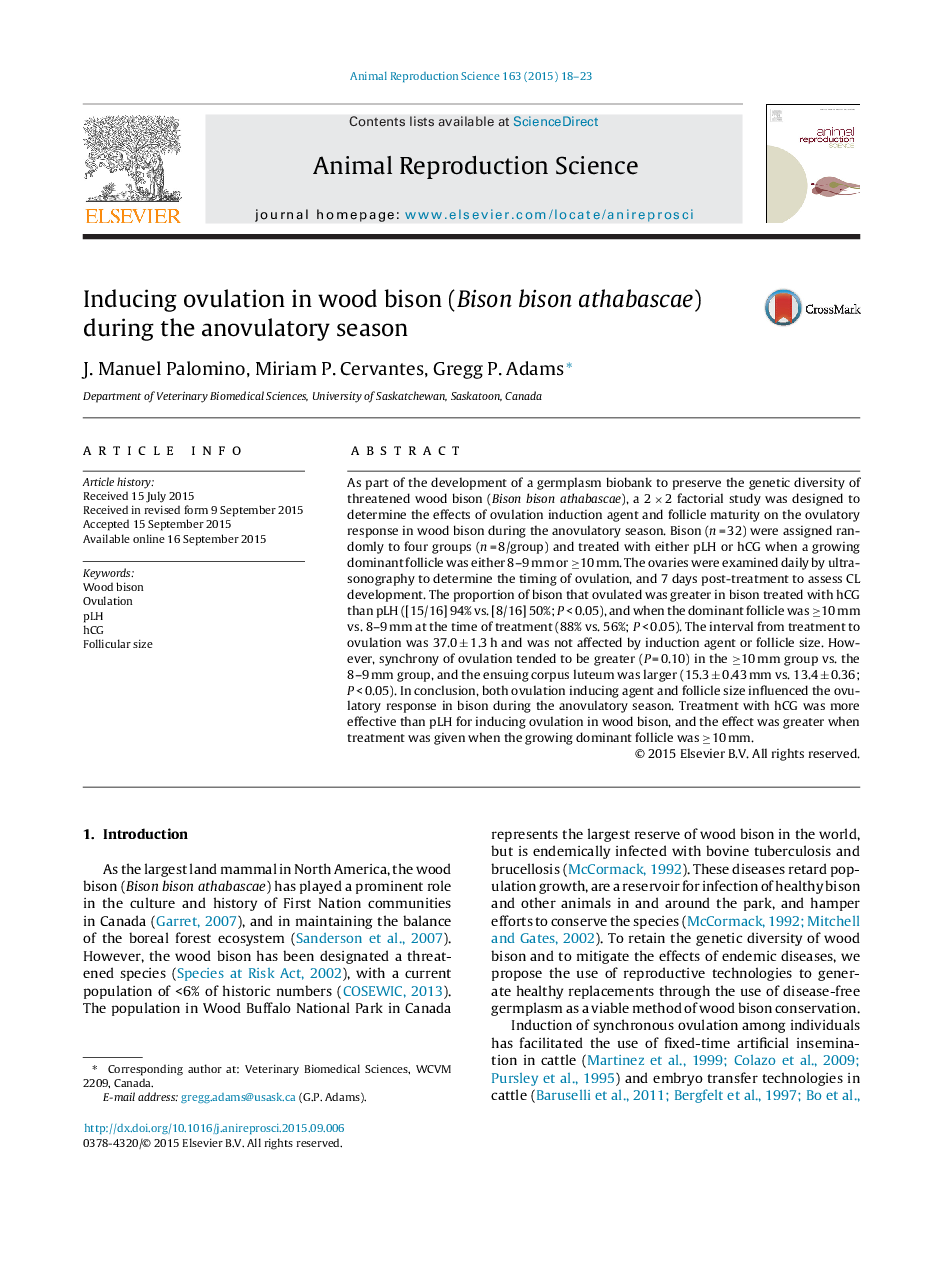| Article ID | Journal | Published Year | Pages | File Type |
|---|---|---|---|---|
| 8404218 | Animal Reproduction Science | 2015 | 6 Pages |
Abstract
As part of the development of a germplasm biobank to preserve the genetic diversity of threatened wood bison (Bison bison athabascae), a 2 Ã 2 factorial study was designed to determine the effects of ovulation induction agent and follicle maturity on the ovulatory response in wood bison during the anovulatory season. Bison (n = 32) were assigned randomly to four groups (n = 8/group) and treated with either pLH or hCG when a growing dominant follicle was either 8-9 mm or â¥10 mm. The ovaries were examined daily by ultrasonography to determine the timing of ovulation, and 7 days post-treatment to assess CL development. The proportion of bison that ovulated was greater in bison treated with hCG than pLH ([15/16] 94% vs. [8/16] 50%; P < 0.05), and when the dominant follicle was â¥10 mm vs. 8-9 mm at the time of treatment (88% vs. 56%; P < 0.05). The interval from treatment to ovulation was 37.0 ± 1.3 h and was not affected by induction agent or follicle size. However, synchrony of ovulation tended to be greater (P = 0.10) in the â¥10 mm group vs. the 8-9 mm group, and the ensuing corpus luteum was larger (15.3 ± 0.43 mm vs. 13.4 ± 0.36; P < 0.05). In conclusion, both ovulation inducing agent and follicle size influenced the ovulatory response in bison during the anovulatory season. Treatment with hCG was more effective than pLH for inducing ovulation in wood bison, and the effect was greater when treatment was given when the growing dominant follicle was â¥10 mm.
Related Topics
Life Sciences
Agricultural and Biological Sciences
Animal Science and Zoology
Authors
J. Manuel Palomino, Miriam P. Cervantes, Gregg P. Adams,
